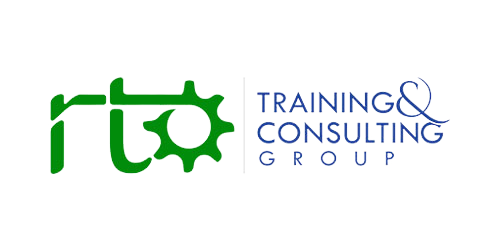A nation of early adopters, not reckless experimenters
Australian classrooms are quietly rewriting the global playbook on educational technology. The 2024 Teaching and Learning International Survey (TALIS) finds that two-thirds of our lower-secondary teachers—about 66 per cent—used artificial intelligence in the past year, placing Australia fourth among 55 education systems for AI adoption and well ahead of the OECD average of 36 per cent. Far from a novelty, AI has become a practical assistant that teachers reach for when they need to plan faster, clarify content, or refine classroom materials. The headline is unambiguous: Australian educators are leading the world in using AI for everyday work, and they are doing so with a distinctly professional caution.
What teachers actually use AI for
The Australian pattern is pragmatic. Teachers turn to AI most readily for idea generation around lesson design, for summarising material, and for improving the clarity or accessibility of resources they intend to take into the classroom. These are low-risk, high-leverage tasks that sit squarely in a teacher’s professional wheelhouse. Where the risks are higher—such as analysing identifiable student data or automating grading—Australian teachers are markedly more conservative than their peers overseas, a stance consistent with TALIS findings on professional judgement and with national guidance emphasising ethics, transparency and privacy. In other words, adoption is strong, but it is not indiscriminate; it is bounded by the values and responsibilities that define the profession in Australia.
The workload paradox: high AI use, high stress
Here’s the tension the system must face squarely. Australia’s teachers report some of the highest levels of work-related stress of any TALIS country, with frequent stress well above the international average. The sources are familiar to every staffroom: administrative load, marking, and staying abreast of curriculum change. If AI is helping at all, the relief has not yet translated into lower stress at scale. The most plausible reading of the evidence is that teachers are embracing AI precisely because they are under strain—using it as triage for time and paperwork—while the structural causes of workload remain largely intact. Until those upstream issues are addressed, the profession will keep feeling the squeeze even as individual teachers find tactical gains from new tools.
A system leaning into AI—deliberately
Outside classrooms, the broader ecosystem is also moving. Australian governments have endorsed a national framework for generative AI in schools, setting expectations on safety, privacy and responsible use while signalling that innovation should continue. This policy scaffolding matters: it legitimises professional use, clarifies boundaries, and gives leaders a reference point for local procedures and staff development. When teachers are asked to integrate new technology, they need more than a tool; they need a clear runway, and the framework is designed to provide exactly that.
Evidence from schools: the quiet normalisation of AI
Independent research from Campion Education shows the sector has already crossed an adoption threshold. Nearly four in five Australian secondary schools—78.2 per cent—report active use of AI tools, and about one in five are planning further expansion within the next year. Strikingly, a majority of schools still prefer a blended approach to resources: just over half describe themselves as “dual learning” environments, deliberately combining print and digital to maintain pedagogical flexibility and minimise distraction. The picture is not of a sector rushing headlong into fully digital classrooms, but of schools adding AI to a broad toolkit while preserving what works.
Why the pattern makes sense: teachers optimise for judgment, time and context
The Australian approach mirrors how expert practitioners adopt new technologies in other high-stakes fields: they apply AI to speed up low-risk, high-volume tasks but hold the line on decisions that hinge on ethics, privacy or nuanced interpretation. Brainstorming lesson ideas is a safe efficiency gain; automating summative assessment is not. Summarising reference material helps teachers prepare quickly; delegating judgement about student growth to an opaque model does not. This is also where the local context matters. National guidance emphasises responsible use, and professional standards prioritise teacher judgement and student wellbeing—the very norms that steer teachers towards AI as an assistant, not an arbiter.
Leadership and culture: the missing multiplier
TALIS underscores a subtle but crucial dynamic: successful technology integration correlates with strong leadership, targeted guidance and ongoing professional learning. Schools that treat AI as a shared capability—supported by clear policies, exemplars, and time for teachers to practise—convert personal experimentation into institutional improvement. Those who leave adoption to individual effort risk uneven practice and limited impact on workload. The lesson for sector leaders is simple and actionable: if you want AI to help with the stress drivers TALIS identifies, you must redesign workflows around the time AI saves, not layer new expectations on top of old ones.
Mind the data (and keep it small)
One reason Australian teachers have not rushed into AI-driven assessment or data analysis is that these uses typically require ingesting student work or performance information, raising privacy obligations and trust concerns. National policy guidance explicitly foregrounds these risks and insists on transparent, ethical implementation. A practical rule of thumb is emerging: where tasks can be tackled with de-identified prompts or public-domain content—like drafting outlines or re-voicing reading passages—teachers proceed. Where tasks would require exposing student data—such as analytics on individual progress—they proceed only with approved tools and explicit protections, or not at all. That caution is a strength, not a weakness.
The professional case for AI in the classroom
Used well, AI amplifies what teachers already do. It compresses planning time, offers alternative explanations for tricky concepts, and helps differentiate resources for mixed-ability classes. Teachers then reinvest saved time into high-impact activities: formative feedback, relationship-building, and adaptive instruction. TALIS suggests Australian educators are already drawing that distinction in practice, using AI to augment preparation while keeping core assessment and pastoral decisions in human hands. This is precisely where AI is most defensible pedagogically, ethically and legally.
The policy case: move from permissive to enabling
If Australia wants the benefits teachers are finding to become systemic, several enablers need to harden from good intentions into standard practice. School systems should provide approved, privacy-compliant AI tools that integrate with existing platforms; invest in professional learning that is practical, job-embedded and ongoing; and explicitly redesign administrative processes so the hours saved by AI are captured, not silently reabsorbed. At a national level, continued refinement of the AI schools framework, backed by procurement guidance and model policies, will help smaller systems and schools that lack the capacity to build their own guardrails. The goal is not maximal use, but wise use that directly reduces the TALIS stress drivers—admin, marking and compliance—rather than adding new layers of digital busywork.
A realistic reading of the numbers
The TALIS dataset is formidable—almost 280,000 educators across 55 systems participated—so comparisons carry weight. Australia’s high adoption rate should be read alongside the reality that many countries report lower AI use, especially across parts of Europe, and that some high-adoption systems in our region, such as Singapore and the UAE, are also investing heavily in national infrastructure and guidance. Australia’s edge is not merely cultural enthusiasm for technology; it reflects frontline pragmatism coupled with policy signalling that says “yes, but safely.” The next phase will test whether those signals translate into durable workload relief and measurable gains in instructional quality.
What can school leaders do tomorrow?
The most effective next steps are small, concrete and cumulative. Pick one administrative process ripe for automation—drafting unit outlines, converting syllabus text into differentiated reading, or producing first-pass parent communications—and standardise the workflow with an approved tool. Provide a short, practical PD loop focused on prompts, privacy and product-quality checks. Establish a simple rule to protect teacher time, such as banking a percentage of hours saved for co-planning or feedback. Finally, publish a plain-English staff guide that names the tasks where AI is encouraged, where it is permitted with conditions, and where it is out of bounds. None of this requires a moonshot; it requires leadership that backs professional judgment with clear systems.
The bottom line: leadership and guardrails turn early adoption into a sustainable advantage
Australia’s teachers are not dabbling; they are adapting. TALIS shows a profession that has already integrated AI into everyday practice more than almost any of its peers, while keeping its collective hand firmly on the ethical brake. Independent school-sector research shows the institutional context catching up, with most schools now using AI and a clear preference for blended resource models that prioritise pedagogy over novelty. The challenge is to make those individual gains systemic by redesigning work, resourcing leadership, and sharpening guidance so the time saved by AI is returned to teaching and learning. If Australia can do that, it won’t just be a leader in adoption; it will be a leader in impact—and that is the kind of leadership students feel where it counts, in the rhythm of daily classroom life.
References
OECD Education GPS, TALIS 2024 country profile for Australia (AI use, rank, stress); OECD “Results from TALIS 2024” overview (scope and participation); ACER national release and TALIS Australia commentary (stress, self-efficacy, AI use); Australian Government framework for generative AI in schools (ethics and privacy guidance); Campion Education Digital Landscapes in Australian Schools 2025 (school-level adoption and blended resource preference).


































